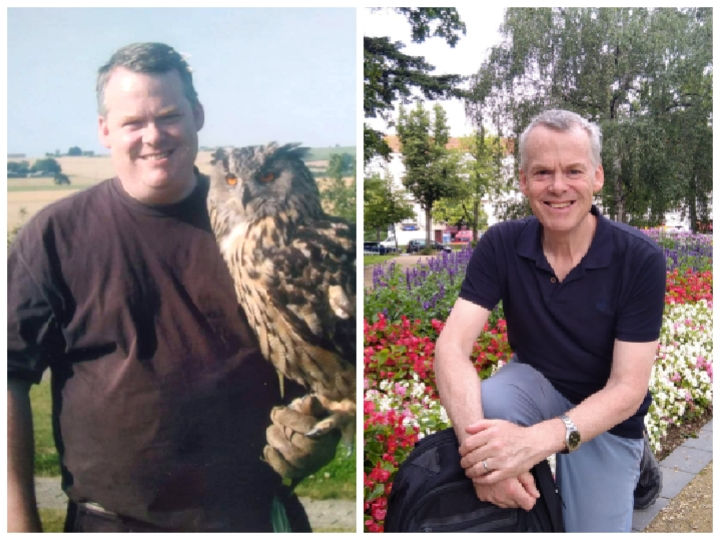Cell Danger Response
- Henry & Henry

- Jul 30, 2024
- 6 min read
I have a workshop participant to thank for leading me to the work of Robert Naviaux and his findings, particularly in respect of the cell danger response and what can happen when this natural response persists instead of concluding its work and stepping back.
Let me clarify, but very simply. The cell danger response is the body’s way of dealing with a threat whether that be injury, trauma, infection or an environmental stressor. This prompts a change to mitochondrial function within the cell which, in turn, triggers the healing response. This healing process involves a number of stages which must be concluded for the process to be completed and for good health to resume. This is all well and good and has been supporting us throughout human evolution. The challenge occurs when one or more of the stages fails to complete, gets stuck. When this happens, we have chronic illness.
It doesn't surprise me that conditions such as chronic fatigue are on the increase. Whilst this is certainly not the only illness that might be linked to an ongoing cell danger response, it's a very good example of it and it feels revelatory to me personally.
Anything I've said or written previously states quite categorically that for me, chronic fatigue was initiated by a flu virus at the end of 2017. I was wrong. I was basing my statement, not on my reality, but on a belief that there must be one single trigger. It is the case that the symptoms I experienced in 2018 left me in no doubt that I had chronic fatigue, but I'd had them before and regrettably my response then had been to regard myself rather critically for not coping with life the way I used to and the way others around me seemed to. I didn't know what chronic fatigue was and it never crossed my mind that I might have ‘Yuppie Flu’ as it was disparagingly called in the 80s and 90s.
It's reading about Naviaux's work that has prompted me to see a bigger picture. The threats listed above that trigger the cell danger response occur increasingly commonly and are numerous. Is it surprising that such an onslaught might interfere with one or more of the stages which lead to recovery from those events? What if you have more than one such threat in relatively close proximity to another?
Graham (my husband) has often suggested that the operation I had for endometriosis at the end of the 1990s might have initiated some of the challenges I still have today. I'm now inclined to suspect he has a point. I've been interviewed about the endometriosis experience recently, so I won't expand here, other than to say that this was not keyhole surgery, but rather a major incision, definitely a trauma to the body, and it was followed up with a series of physically challenging injections over the course of several months. It's distinctly possible that I hadn't fully recovered from this medical intervention when a long and drawn-out redundancy process began leading to the end of my teaching of German. Maybe this was why, for some time after, I could barely walk to work, why my sleep got worse, anxiety increased and working part-time was definitely the best option?
The more recent experience was similar in that the flu virus hit after the prolonged stress of my father's two year coma and ultimately his passing.
These are mostly big life events, but an infection isn't (at least not always), and what about environmental toxicity in our water, in the air we breathe and in our food? It doesn't have to be trauma with a capital T, because these issues are quite simply more prevalent now than they used to be and each person responds differently to stress and trauma. And none of us can know how we might respond to an accumulation of triggers … until it happens.
We really mustn't reproach ourselves for the way our bodies respond, or even why we come to mistaken conclusions about our illness. Why did I look for one trigger and assume that to be the cause? Because for the most part, that's where medicine is at. Naviaux points to the error of looking for the trigger as a way of responding to the ensuing illness. In terms of healing, looking for the pathogenesis of the condition is of minimal importance.
And it goes further. Whilst it's acknowledged that chronic fatigue syndrome is a multi-system condition, nobody has an overview and corresponding response. Modern medicine for all its spectacular achievements is very much fragmented into areas of specialism. I once came across an analogy whereby several people surrounding an elephant stand so close that one believes an elephant to be a tail, another regards it as a trunk and yet another as a leg, but none of them are able to conceptualise the whole animal. This is more or less where medicine is in respect of many of today's chronic conditions.
So what can we do if the Cell Danger Response persists?
Based on my own response to the chronic fatigue I knew I had, you might imagine I'd lead with food, after all it's far from unusual for those who have the condition to also have gut dysbiosis, an imbalance in the microbiome. Plus, focusing on eating differently definitely correlated with an improvement in my symptoms. Food most certainly matters, but how do we begin to communicate to our cells that the future is safe, and that it's safe to redirect attention away from defence and instead allow the healing process to complete? This involves consistent regular messages to the nervous system, in particular the vagus nerve.
The vagus nerve¹ is the biggest cranial nerve in the body. Vagal nerve fibres transmit messages to organs and sense organs. It's well-known that stimulating this nerve has a calming effect and it slows the heart rate. But it also affects digestion, pancreatic function, our ability to taste, to express emotions and, crucially in the context of this post, to interpret signals that indicate safety or danger. It also carries messages that dampen the inflammatory response and it's a vital mediator of the immune system².
There's more than one way to stimulate the vagus nerve, but only one of them is 100% portable and trainable to not only stimulate the nerve when needed, but also to increase vagal tone. Just as a trained muscle becomes stronger the more it's used, so too with vagal tone, meaning its effects extend beyond the ‘training period’. This is slow breathing. Slowing breathing sends a message from the body to the brain that we are safe.
Just as gut dysbiosis is often present in those with chronic fatigue, so is dysfunctional breathing a common factor in illness generally, specifically over-breathing, breathing too fast. That being the case, I would recommend that anyone dealing with a chronic condition start where they are. Try to take a slightly slower breath in and if you can, a slower exhale than your inhale.
How to work on your vagus nerve
It's becoming quite well-known now that the optimum breathing pattern is 4 : 6 i.e., 4 seconds inhale, 6 seconds exhale. If you can do this fairly comfortably without taking in lots of extra air to enable it to work, then go ahead. Great. It's highly likely however that if you are one of those of us with dysfunctional breathing (as mine was), you will need to build up to it. Any slowing of your breathing will be useful to you so however long it takes you to get you close to the 4 : 6 practice, none of your ‘training’ is wasted. And bear in mind that this 4 : 6 breathing is an exercise, not a prescription for moment by moment breathing. Nevertheless, the practice should help you to slow your overall breathing throughout the day and night.
I would like to add that when I'm coaching someone with this kind of breathing challenge, I typically start them off with light breathing practice (which has additional benefits relevant to recovery from fatigue conditions). The over-breathing that is so common needs to be addressed first in most cases. If the biochemistry is not right, the other training will have its limitations rather than give you the many benefits of truly beautiful, life-enhancing breathing.
If any of this applies to you, I implore you to retrain your day-to-day breathing and keep up a concerted practice to allow your vagus nerve to do the best job it can to look after you.
Wishing you all the best as you progress to better health.
~Annette Henry

Interview with Dr Naviaux on his study “Metabolic Features of Chronic Fatigue Syndrome”
A YouTube presentation from Dr Naviaux on the Cell Danger Response (fairly accessible for a non-scientist)
¹A little more about the Vagus Nerve
²Inflammation correlates with symptoms in chronic fatigue syndrome
Breathing Re-education with Henry & Henry



)_20230830_134131_0000.png)



Comments